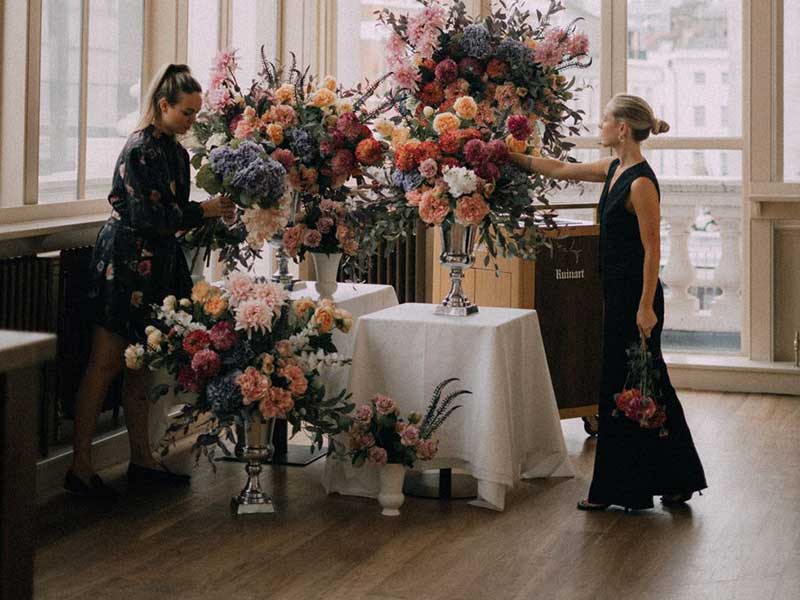Whether it’s a hydrangeas clustered in a painted pot, bunches of pink peonies festooning a table or seasonal arrangements sitting on a mantlepiece, nothing says Spring quite like beautifully arranged blooms. But in more than a few stylish households this season, you’re likely to be admiring buds with a difference: fashionable foliage has gone faux.
It has taken artificial flowers years to throw off the less-than-luxury associations that ‘fake’ often denotes – in other words, budget-friendly, bad quality and just a little bit naff. But these days, faux flowers are everything but, thanks to new, high-fashion makers and elevated craftsmanship. “I just couldn’t find any faux flowers that weren’t either super expensive, or didn’t look really cheap,” says Elle King, the co-founder of ‘forever flowers’ brand Ett Hem London. She and her business partner, Sarah Radovich, saw a gap in the market emerge during the pandemic. “We spent years gifting fresh flowers to our friends and receiving them, too. And we got really sick of receiving bad quality, even dead blooms.”
Sarah Radovich (left) and Elle King working on installations for Ett Hem
And they aren’t the only ones realising the potential – and increasing popularity – of artificial stems. “We’ve seen a lift in sales year-on-year, particularly around Christmas, when our range of faux foliage really comes into its own,” says Sue Jones, co-founder and creative director of the high-end interiors brand Oka. “I personally love using our garlands and wreaths to decorate my home. Not only do they look extremely realistic, but they stay fresh all season long and have the added benefit of being reusable for many years to come.”
Designer Abigail Ahern, meanwhile, prefers to use “trailing pine branches and eucalyptus stems” from her own range all year round, and tells me that each collection of her faux flowers “seems to gather even more popularity. Faux botanicals are a real investment and, with the right care, these stalwarts will last for a long time. If, like me, you love to reflect the season, just change them up, pop them away and then bring them back out again when the time is right.”
It would be easy to disregard faux flowers as less than sustainable, given that so many are made from plastic – but their endless versatility and reusability makes them, in fact, far more eco-friendly than their real-life counterparts. King and Radovich have ensured that excellent quality is at the forefront of Ett Hem London, so that the blooms really do last you a lifetime. “The petals are all handmade from silk, polyester and plastic, and some are hand-painted,” explains King. “They’re then attached by hand to the stems, which have wire inside, so that you can bend and shape them.”
Faux flowers come in all forms, from extravagant bunches to subtle stems.
The price of cut flowers has sky-rocketed thanks to inflation and higher labour costs; additionally, blooms are becoming less accessible thanks to rising temperatures, meaning flowers are air-freighted all over the world – at a massive financial and environmental cost. It’s time, therefore, for a shift in perspective when it comes to how we see real versus faux flowers – in terms of both sustainability and quality.



.jpg)


